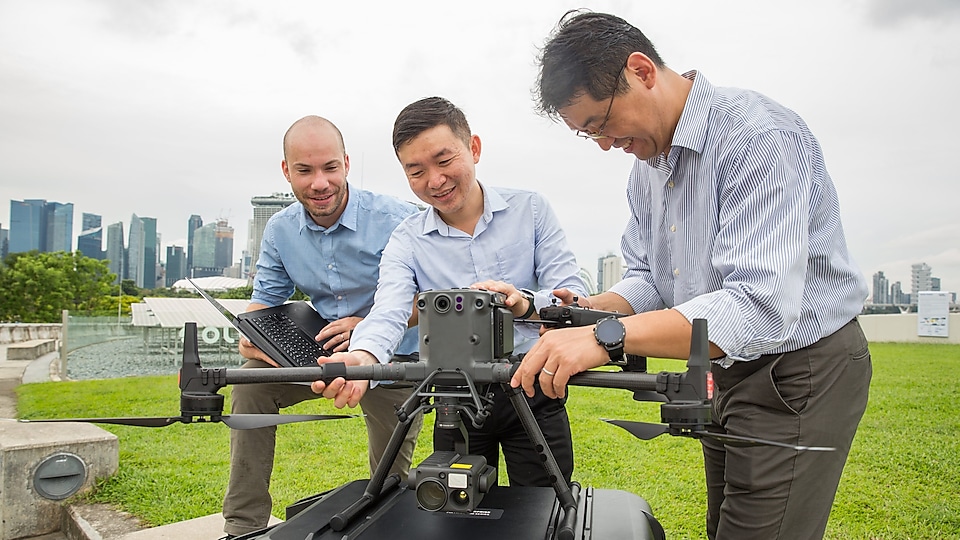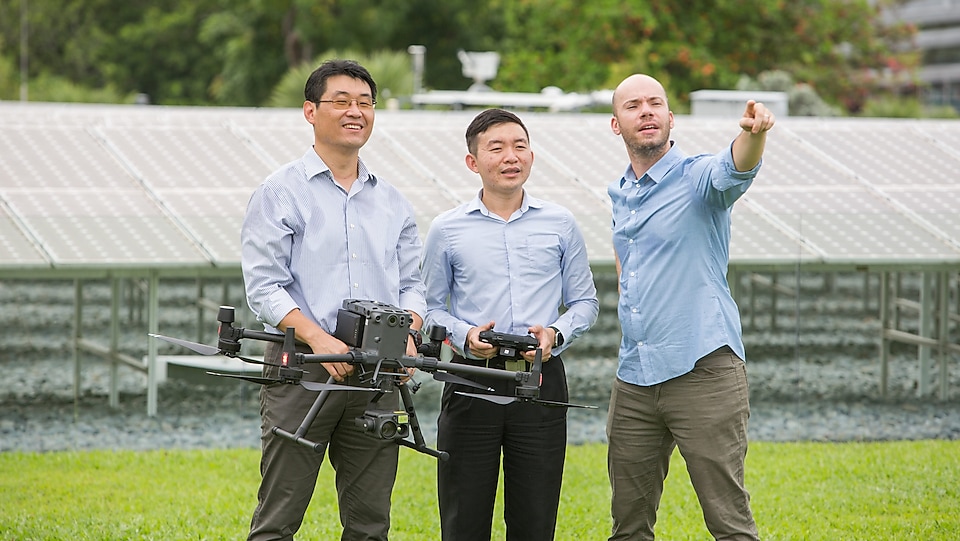
QE-Labs: Flying close to the sun in search of a sustainable future
Chai Jing, Karl Bedrich, Wang Yan and Khoo Yong Sheng hail from different corners of the world. The scientists behind QE-Labs have gathered here to chase a future world powered — sustainably and efficiently — by solar energy.
By QE-Labs: Chasing the sun for a sustainable future on Dec 01, 2020
This bright future, however, is shadowed by a unique set of challenges. According to Yong Sheng, co-Founder at QE-Labs, photovoltaics (PV) modules fail before its 25-year lifespan because of multiple external stress factors and internal material flaws. “Premature failure of solar panels diminishes green electricity generation and reduces its return on investment. It also burdens the E-waste management and recycling system,” he shares.
As solar PV power plants grow larger and are adopted globally, unpredictable PV module failure could pose a big problem to PV asset management.
Singapore has set a target to deploy a 2GWp solar PV system by 2030. This would generate enough energy to power around 350,000 households in Singapore. This will require more than 6 million PV modules to be distributed island wide. That is a lot of solar panels to maintain.
It is QE-Labs’ mission to maximise the performance of the PV system by accurately identifying and replacing the defective modules in a timely manner despite their remote locations.

The company begun as a deep-tech spinoff from Solar Energy Research Institute of Singapore (SERIS), Singapore’s national institute for applied solar energy research. During their tenure, the founders had seen an abundance of underperforming PV systems in operation that caused massive financial losses. This also meant less electricity produced from the same amount of sunlight. This led to its vision to develop a digitised turnkey solution for professional PV asset management.
“It is important that we get ahead of the potential pitfalls. Through our patented advanced drone electroluminescence (EL) imaging technology, we can inspect solar PV modules more accurately by visualising internal defects that conventional visual and IR thermography can’t pick up. Coupled with A.I. enhanced big data analysis using Quantitative EL Analysis (QELA) algorithms, we hope to take predictive measures to protect our clients’ investment and preserve the PV systems energy generating ability,” elaborates Yong Sheng.
Besides safeguarding asset owners, it also benefits financial and insurance institutes by ensuring bankability and insurability through detailed technical due diligence, they assert.
Looking back, the founders shared the backstory for QE-Labs.

Yong Sheng had always wanted to leave his mark on society. “I believe solar power has the greatest potential to positively impact the livelihood of all humankind,” he declares. Managing Director Chai Jing says his passion for renewable energy fuels his drive to push for mainstream adoption of solar energy.
Wang Yan’s motivation comes from experiencing the tremendous economic growth in his homeland China. The fast-rising development had left several environmental issues in its wake. Increasing air pollution from heavy reliance on coal is just one. “Direct conversion of sunlight into electricity through reliable PV devices is the technology that will support our low-carbon future and create a sustainable world,” he proclaims.
“Honestly, I didn’t care much for PV power generation initially,” Karl admits with a laugh. “I thought it was just boring black panels on people’s roofs.” After spending time in the field, he now understands solar is actually the root of all renewable energy. “Without the sun to create pressure gradients, evaporation and growth, you couldn’t get wind, water or biomass energy,” he explains.